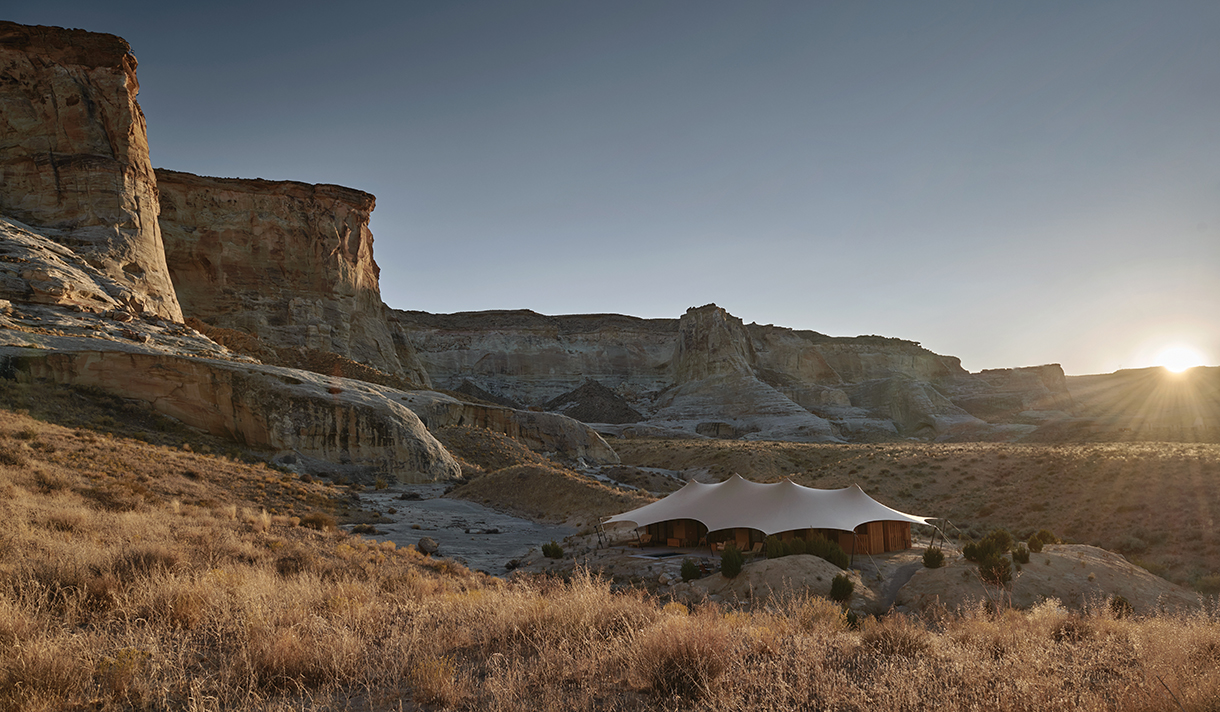
Far and Away
Want access to places you never could have stayed before? Remote regions all to yourself? These six tented retreats are as luxurious as they are isolated, and often located hundreds of miles from the closest city.
The places that few people know of and even fewer can find—where there isn’t anyone for miles, where the air is fresh, where the whole world still seems unclaimed and untouched—are the wild and remote regions requiring accommodations that are under the radar and under canvas. For decades, the concept of the luxury camp was confined almost entirely to Africa, where hunting safaris co-opted (and considerably improved) the style of colonists with campaign chairs and leather trunks. But the pitch has since migrated from Africa to Asia to the American Southwest to give travelers a new sense of escapism in some of the most isolated places on earth. The result is hardly roughing it—rather, these retreats are as comfortable as they are far away, reserved for a select and privileged few.
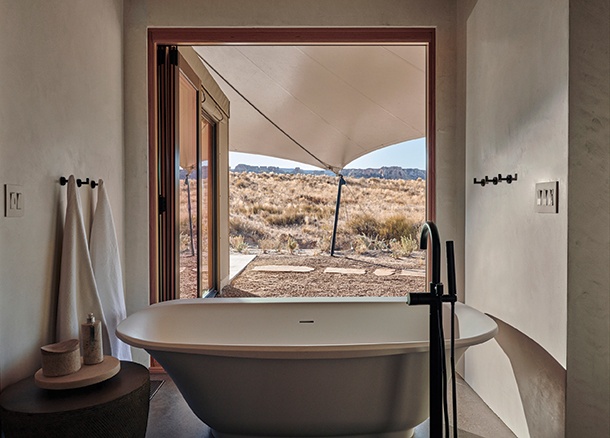
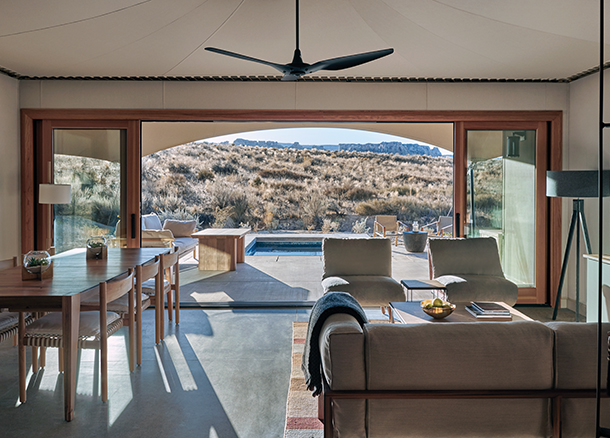
CAMP SARIKA BY AMANGIRI
Canyon Point, Utah
Those who know Amangiri would surely argue that the southern Utah resort is already secluded enough. But Aman has a way of going that extra mile—or in the case of the property’s new tented Camp Sarika, the extra 600 acres of secluded wilderness. Camouflaged against the backdrop of the high desert’s towering mesas and rust-colored sands, the rippling canvas accommodations mimic their undulating setting. This being Aman, there’s no mistaking the suites (“tented pavilions,” as they’re called) for basic campsites. Each comes with its own private plunge pool and bespoke furnishings that borrow from safari style (including walnut desks and campaign chairs), and there’s plenty of personal space, with the campsite comprising close to a square mile of private land.
Sarika lives up to its name—which means “open space” and “sky” in Sanskrit—with nothing but wide-open desert all around. Guests can set out in almost any direction and eventually find themselves at a spectacular national park or monument; the site is bordered by Grand Canyon National Park, the Colorado River, Monument Valley, Grand Staircase-Escalante, and Bryce and Zion National Parks. But one needn’t cover long distances for an adventure: A private via ferrata route is a short hike away, and the camp also has its own trail system and a program of expeditions into picturesque slot canyons. Staying put comes with its own rewards too. Yoga and meditation classes take place among the natural beauty, and at every meal, there’s a taste of the wild from fresh-grown produce and locally sourced meats. Should the isolation feel too secluded, Amangiri remains a 30-minute hike (or a five-minute drive) away for spa treatments and, if desired, a more social scene at the resort’s handful of restaurants and lounges. aman.com
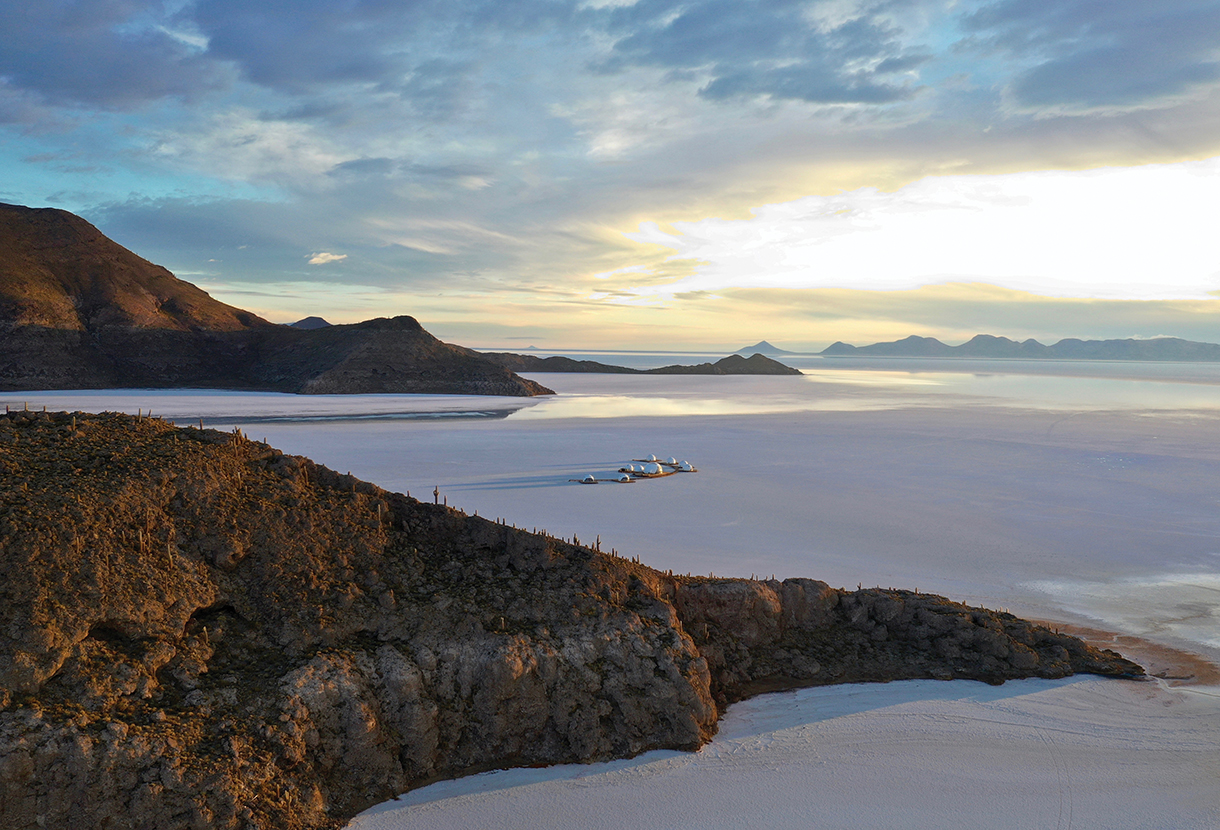
KACHI LODGE
Salar de Uyuni, Bolivia
Bolivia’s Salar de Uyuni has been likened to Mars for its ethereal expanses of white salt flats and gnarled rock formations stretching as far as the eye can see. The arrival of the region’s first luxury camp—a collection of six domed tents located 65 miles from the nearest local airport and 11,800 feet above sea level—only furthers the comparison to some far-off, otherworldly place.
The geodesic domes may have a space-age vibe, but inside, they’re quite fashionable—and functional. Swiss design team Marina Cardis and Marine Luginbühl created a warm and welcoming environment using furnishings made from natural materials such as cactus wood, as well as handwoven textiles and colorful paintings by artist Gastón Ugalde (who has been called the Andy Warhol of Bolivia). The architecture of the clear bubbles, meanwhile, promises that every night ends with a starlit show, enjoyed by guests while gazing up from the comfort of their beds. Dining is also a delight, whether it’s in the main dome restaurant or indulging on in-room treats.
With the world’s largest salt flat right outside their domes, adventurers have miles and miles to explore. Hike to the lower lip of the volcano crater, visit archaeological sites such as Alcaya where the remains of 2,000-year-old mummies are located, and mountain bike around the salt flats. Kachi’s guests have their run of it all—almost as if they were the only guests on Mars. kachilodge.com

KIATTUA
Nuuk Fjord, Greenland
Kiattua has lured royalty, tech billionaires, and other A-listers looking for a truly remote getaway: It doesn’t get more remote than an ice fjord in the least densely populated country on the planet. Set among 800-year-old Viking ruins at the edge of the Nuuk fjord, roughly 50 miles from the closest city, this isolated Arctic retreat can be accessed only by Zodiac boat or helicopter, making it a private oasis for the select few who call its teepees their home base. The canvas suites, which sit in a cluster among sheer cliffs and waterfalls, are both heated and stylish, with plush beds bedecked with furs and minimalist Scandinavian furnishings draped in sheepskins. (Smaller tents steps away house proper restroom facilities.)
But it’s the out-of-the-way beauty of the Arctic—its verdant hinterlands carpeted with moss and willow, and its icy fjords covered in ice sheets—that make a stay at Kiattua truly exclusive. Guests can zip past electric-blue and snow-white glaciers in a Zodiac to search for humpback whales, hike to a waterfall, and swim and kayak in the chilly waters. Forage for mushrooms among the ruins and fish for Arctic char, then enjoy both delicacies prepared by top chefs for dinner later that evening. Michelin-decorated personalities visit regularly from Scandinavia’s best kitchens. They are invited to come with no set menu and no budget to be inspired, using wild herbs and other fresh ingredients foraged directly among the tundra. Come evening, it’s gin and tonics with ice from—where else?—a nearby iceberg, while soaking in the wood-fired hot tub. Staying up all night is always an option too: During Kiattua’s summer season, the sun stays out for nearly 24 hours. arctic-nomad.com
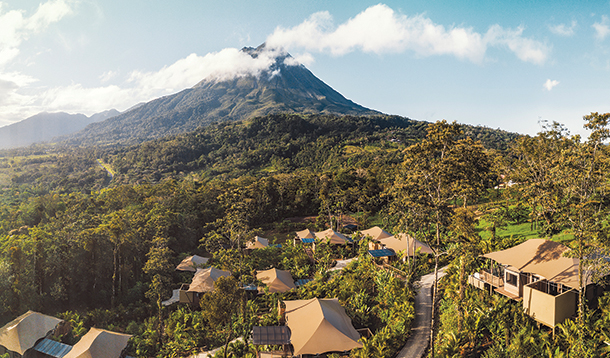
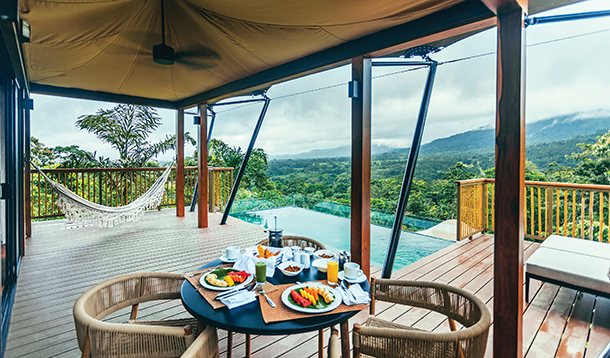
NAYARA TENTED CAMP
La Fortuna, Costa Rica
A few years ago, Leo Ghitis, the owner of Nayara Resorts, began planting Cecropia trees—more than 1,000 of them—in an attempt to lure the native sloth back to its natural habitat after years of deforestation had swept the region. And the lazy, furry creature quickly obliged. Within a year, more than a dozen had returned to the forests just outside of Arenal Volcano National Park. Now Ghitis is luring another kind of guest into his Cecropia forest with this 21-tent camp, combining safari design with the pura vida lifestyle. Inside the rooms, botanical murals, canopy beds, oversize bathtubs, and (perhaps most importantly) air-conditioning promise a comfortable retreat. Outside of each tent, double-head rain showers and private plunge pools fed by the nearby hot springs make for a setting that’s downright euphoric.
Spread over two acres of thick forest, the camp is a private escape with close access to rare and remote experiences such as treks across lava fields, hikes through the Arenal Hanging Bridges Park, and dips in the natural hot springs at the mountain’s peak. Nayara’s Sloth Concierge and team of resident naturalists lead guests on walks to become closely acquainted with their non-human neighbors, including hundreds of species of birds. Staying in-tent among the treetops, the thick rainforest ensures privacy from any other living being (sloths notwithstanding). nayaratentedcamp.com
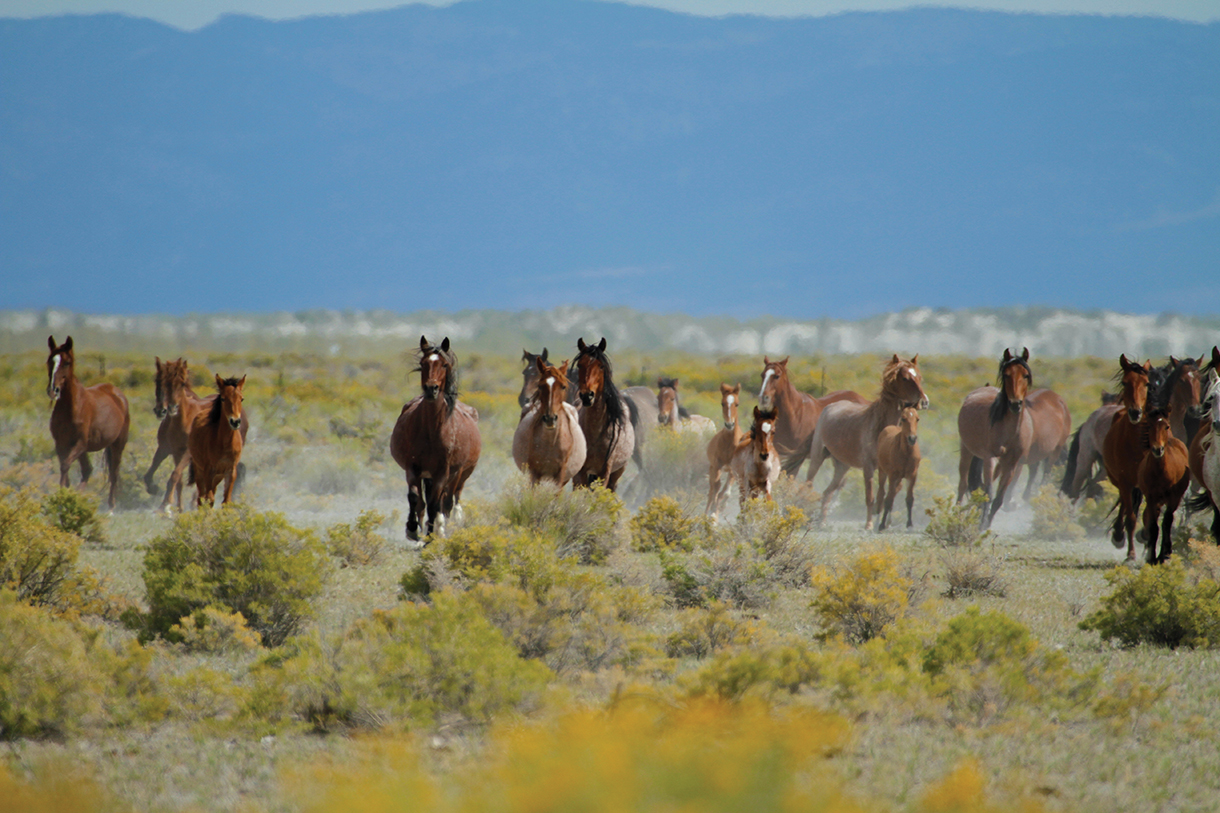
MUSTANG MONUMENT
Wells, Nevada
In the high desert of northeastern Nevada, stretching for more than 900 square miles among cedar trees, white sagebrush, and juniper, this eco-resort is the Old West reimagined. The days of cowboys and Indians, wild horses and open wagons come alive at philanthropist Madeleine Pickens’ paradise for mustangs and a handful of guests in search of an all-American stay.
Opened in 2014 as a nonprofit sanctuary for mustangs, the property is a passion project for Pickens, who has long lobbied for the preservation of the wild horses that over a century ago carried pioneers and California gold rush miners to this one-time land of opportunity. Today the species numbers in the tens of thousands. Though local cattle farmers view the majestic animals as pests for depleting the local prairies, Pickens has devoted her life to creating a sanctuary for them. The resort component reopened last summer after a five-year hiatus with 10 new luxury teepees painted on the outside with colorful scenes of mustangs and coyotes and decorated inside with cozy beds piled high with patchwork quilts and giant leather armchairs atop handwoven tapestries. There is also a teepee for pampering (a spa offering massages and facials) as well as a saloon, re-created from a vintage tractor and furnished with bar stools fashioned from saddles.
Guests can spend as much time in a saddle (at the bar or otherwise) as they like, free to roam the prairie along with more than 700 of Pickens’ rescued horses. Daily rides across the sanctuary (nearly the size of Rhode Island) ford streams and cross long stretches of plains, even passing through Sprucement, a 19th-century miners’ town. Out of the saddle, activities include horse-drawn wagon rides and offroading to the Ruby Mountains and Goshute Valley. Hiking, abseiling, and archery are also offered. Come evening, when a cool breeze sweeps in and the sky is lit with stars, the whipping wind and howling coyotes are sometimes joined by another sound: horses’ hooves pounding the ground, wild and free. mustangmonument.com
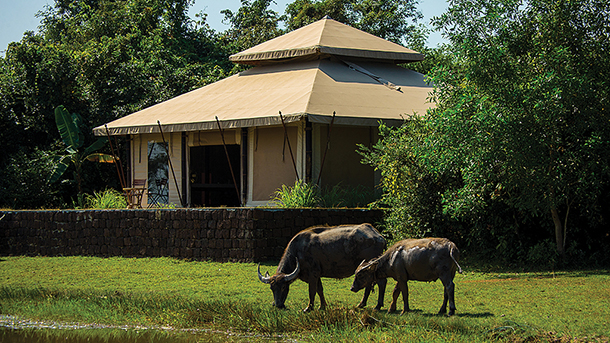

THE BEIGE
Siem Reap, Cambodia
Cambodia’s Angkor Wat was constructed in the 12th century as a temple dedicated to the god Vishnu for the Khmer Empire—but today, a visit to the complex, crammed with tourists from sunrise to sunset, isn’t quite the same kind of spiritual experience. Head a few miles north of the temple, to this estate of 24 private acres where the air of remote beauty and serenity of the ancient landmarks unfold.
Set in an emerald forest, on the edge of the Angkor Thom district (another revered temple complex, this one built in the early 13th century by the Khmer King Jayavarman VII), The Beige is an authentic escape removed from Cambodia’s most heavily touristed sites but offering all the same history and spirituality. Named for the cream-colored organic sailcloth that makes the tents, the safari-chic resort is worlds away from the crowds, with 11 canvas-topped suites, each nestled amid the jungle at the edge of a tranquil flowing stream. It’s not unusual to see an elephant wandering among the tents, which come with canopied four-poster beds, French Colonial antiques, and soaking tubs, as well as expansive terraces with outdoor rain showers and swinging daybeds that allow guests to take in the views in total privacy.
The Beige is built on a Zen experience: The cuisine is all-organic, relying heavily on local ingredients such as baby rice and wild honey (grown on the resort’s own farm) and tapping into the authentic Khmer flavors of ancient Cambodia. Set among the treetops floating some 16 feet high, an infinity pool looks out over the green expanses. Minutes away, guests can visit secret temples that remain as sacred and silent as they were centuries ago; there they can have private picnics and even massages surrounded by nothing but peaceful forest. the-beige.com




